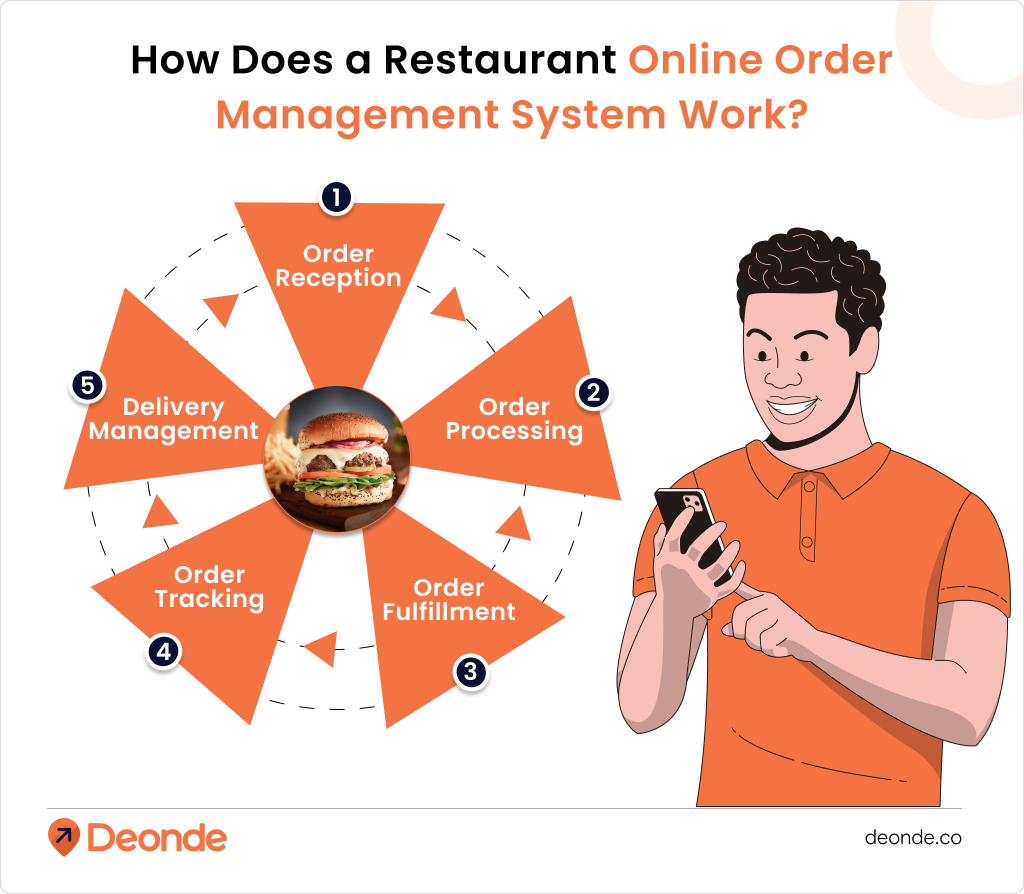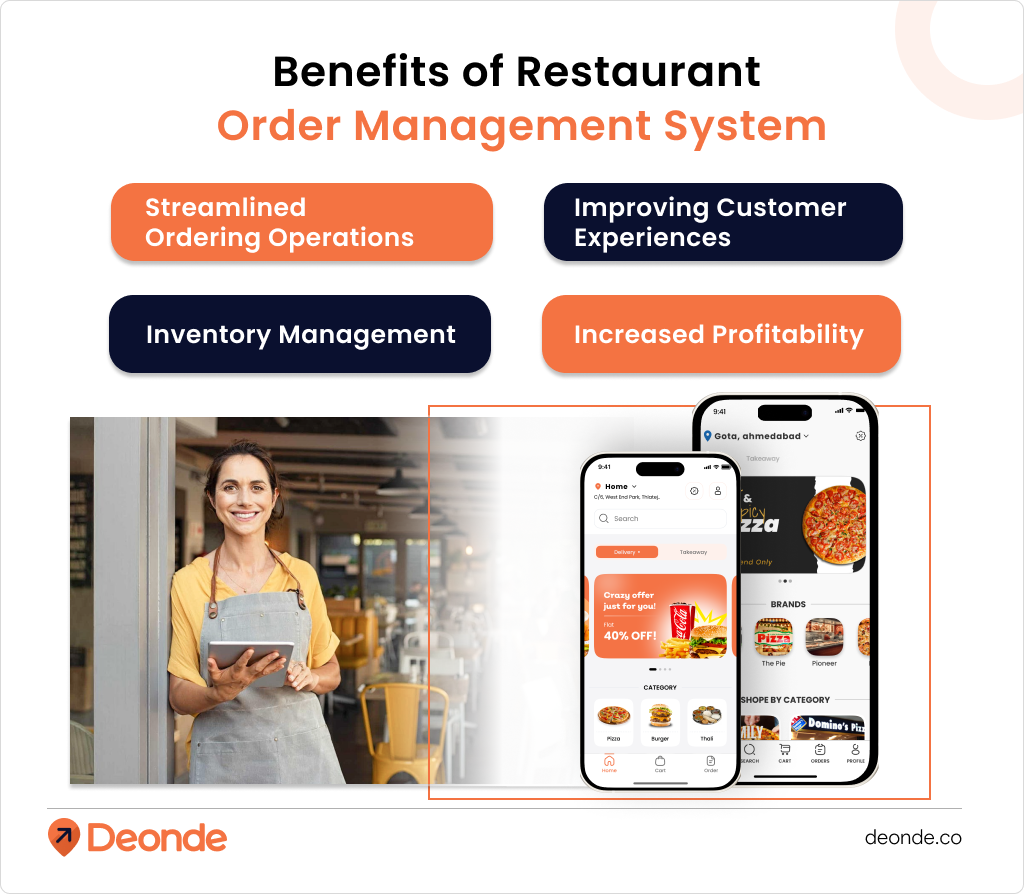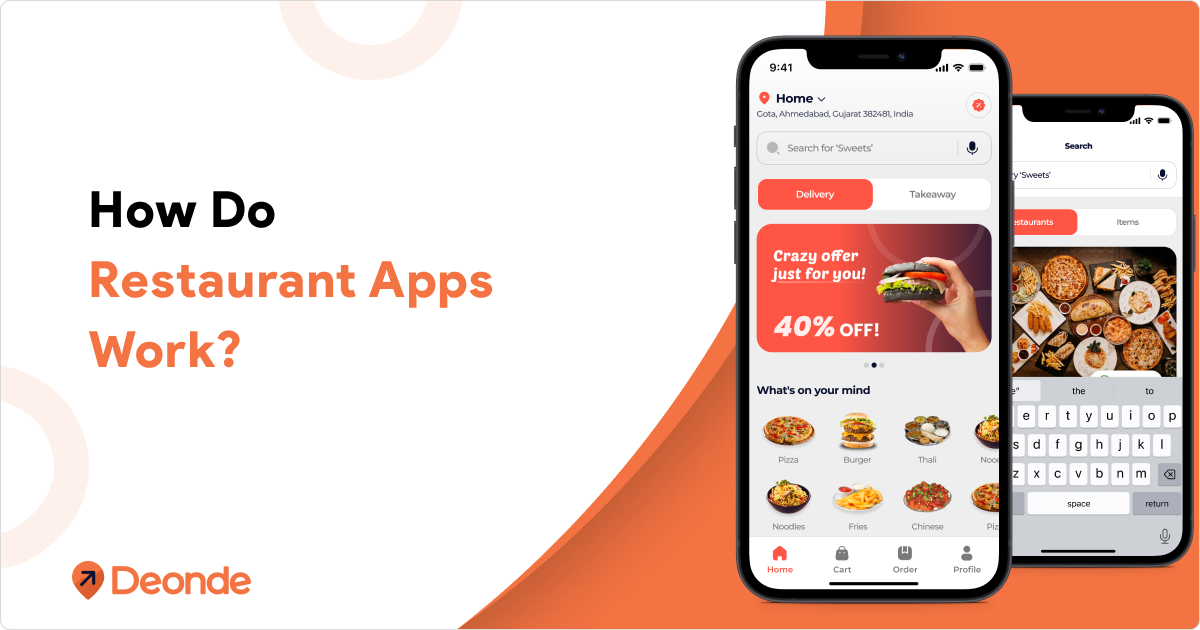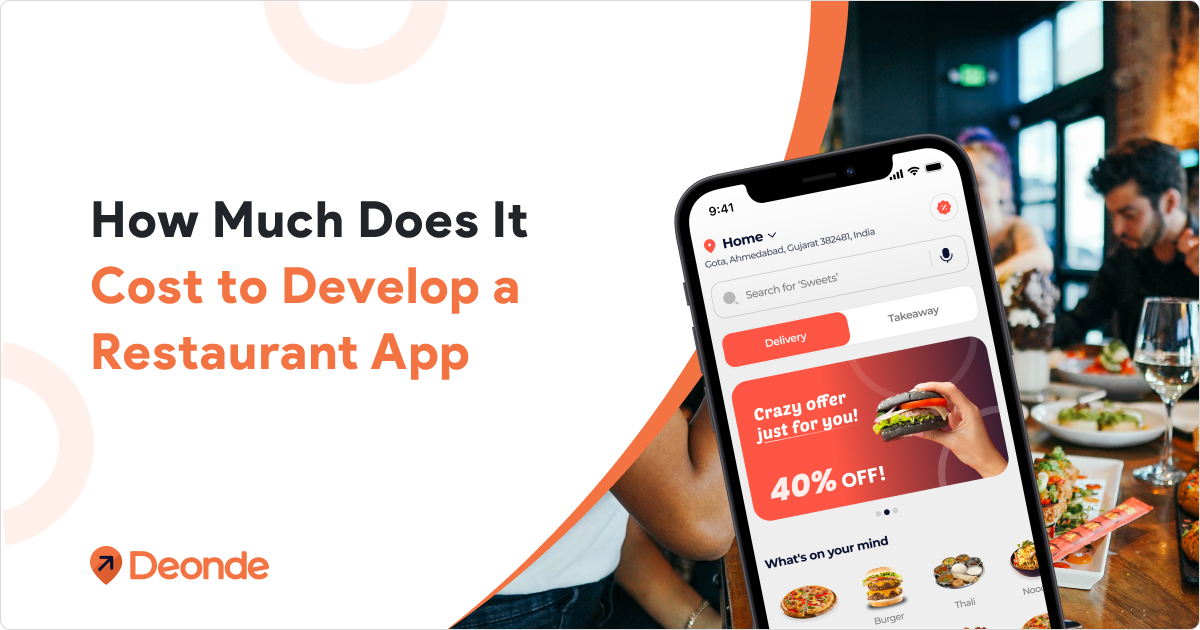Today, 60% of restaurant orders are placed online through on-demand food delivery apps, where customers spend 20% more per order compared to in-house dining.
Per data, getting your restaurant listed on popular food delivery apps like Zomato or Swiggy is rewarding. But it also presents a unique set of challenges.
Running a successful restaurant that caters to online customers means you’ll need to juggle online orders, delivery, inventory, invoicing, marketing campaigns, and more.
And more often than not, you’ll be managing all these operations simultaneously.
And this is exactly where a restaurant order management system can help.
What is an order management system, and why do restaurants need it? Keep reading to find out.
What is a Restaurant Order Management System?
A restaurant order management system is a sophisticated software solution designed to streamline and optimize all aspects of restaurant operations—from taking orders to delivering.
It acts as a central hub for managing the entire customer journey, encompassing both online and offline orders.
So, if you’re doing online sales through a food ordering app, you need to track orders, sales, and delivery.
And an order management system helps you do all of this and more—that too from a single platform.
How Does a Restaurant Online Order Management System Work?

As seen above, a restaurant order management system acts as a central hub, consolidating all orders and sales trackers in one place.
Unlike manual order recording, which is inefficient and prone to errors, an online order management system automates order processing and reduces manual intervention.
As a result, they can improve operational efficiency, reduce errors, and even enhance the customer experience.
Here’s how a standard order management system works:
Order Reception: Online orders can be made through various channels—your website, food delivery mobile apps, or in-person orders.
An order management system will receive and collect all these orders in a single place, thus boosting workflow efficiency.
Order Processing: An order management software automatically captures order details like customer information, shipping address, payment method, and order items.
Order Fulfillment: The system displays order details clearly for the staff and can help your restaurant kitchen prioritize orders.
Order Tracking: Order management software also tracks the progress of each order in real-time, allowing staff and customers to monitor its status (e.g., order received, in preparation, ready for pickup/delivery).
Delivery Management: You can also integrate these order management systems with your logistics services to optimize food delivery services.
Benefits of Restaurant Order Management System

Order management systems are no longer a luxury but a necessity for restaurants today.
By automating key processes and providing valuable insights, order management systems empower restaurants to enhance operational efficiency, improve customer satisfaction, and drive significant growth.
Streamlined Ordering Operations
Restaurant order management systems can seamlessly integrate orders from diverse channels into a single, unified interface. This centralized system efficiently routes orders—thus minimizing delays.
Furthermore, by automating order entry, order management systems eliminate the need for manual data input, reducing the risk of human error and significantly speeding up order preparation
Improving Customer Experiences
You may be surprised by this, but yes, digital order management systems significantly boost your CSAT scores and improve the customer experience.
Real-time order tracking through order management systems increases transparency. It can also make your online customers feel more in control, as they can monitor the progress of their orders.
Streamlined order processing and efficient kitchen operations minimize customer wait times, while reduced order errors ensure customers receive exactly what they ordered, leading to increased customer satisfaction.
Additionally, a restaurant management system can capture customer data, order history, and preferences. This can be leveraged to personalize your customer’s ordering experience.
Inventory Management
By analyzing historical order data, order management systems can identify trends and patterns in customer demand.
This data-driven approach allows restaurants to forecast food demands more accurately. Restaurants can use this data to optimize their inventory levels and avoid overstocking.
Hence, an order management system can minimize overhead costs and also prevent lost sales due to stockouts.
Increased Profitability
Restaurant order management systems provide invaluable data, including sales trends, peak hours, popular menu items, and customer preferences.
Restaurant owners can leverage this data to make informed decisions regarding menu optimization, staffing, and targeted marketing campaigns.
By leveraging these insights, restaurants can optimize operations, reduce costs, and enhance customer satisfaction, ultimately driving significant revenue and profitability increases.
Order management systems can optimize restaurant workflows, significantly reducing overheads and, thus, contributing to increased restaurant revenue and profitability.
Manage Customer Orders And Data Of Your Restaurant With Deonde
Deonde’s restaurant management software encompasses a suite of tools, including order management, inventory management, and robust data analytics.
This integrated approach streamlines operations, providing restaurants with a unified view of their business.
Centralized Control with Deonde:
Deonde helps restaurant chains with centralized control, ensuring consistent brand experiences across all locations. By bringing all restaurant activities onto a single platform, Deonde simplifies management.
Enhanced Customer Experience:
Deonde’s online ordering suite captures valuable customer data, including order history and preferences. This information allows restaurants to personalize the dining experience.
Improved Communication and Efficiency:
To minimize errors, Deonde also facilitates seamless communication through real-time order updates, in-app chats, and messaging.
Mobile Accessibility:
Deonde’s SaaS-based order management platform offers convenient mobile access to all. Whether you want to check inventory levels or review real-time order reports, Deonde’s mobile accessibility ensures flexibility.
Take control of your restaurant with Deonde’s powerful order management software. To get started, click here.
Conclusion
In today’s digital age, customers expect a seamless and efficient dining experience, whether they order online or dine in.
Traditional order management methods can lead to errors, delays, and frustrated customers.
However, restaurant order management systems offer a powerful solution to this problem. By streamlining operations, enhancing customer satisfaction, and driving significant growth, order management systems are truly revolutionizing restaurant businesses.
So why wait? Don’t let your restaurant fall behind. Take control of your operations and successfully empower your business with Deonde’s Restaurant Order Management Software.
FAQs:
1. What Is A Restaurant Order Management System?
Think of an order management system as a central command center for all your restaurant’s orders. It is a single platform to manage orders from various sources, including food delivery apps, in-person ordering, and phone orders.
2. Why Is Order Management Software Essential For Restaurants?
An order management system streamlines operations by automating order taking, processing, and fulfillment. It also minimizes errors and maximizes efficiency by reducing human intervention. By streamlining workflows, order management systems ultimately contribute to increased revenue and profitability. For these reasons, they have become a must-have for restaurant businesses.
3. What Are The Benefits Of Implementing An Order Management System?
Implementing an effective order management system offers numerous benefits like increased efficiency, reduced errors, inventory management, improved customer satisfaction, transparency, and in-depth data insights.




